“We wanted to really stress-test our thoughts for Wembley Park. Delve delivered workable options respecting the rules of the game, and on targets that we set.”

— Jason Margrave
Executive Director - Development
Quintain
DELVE CASE STUDY: QUINTAIN
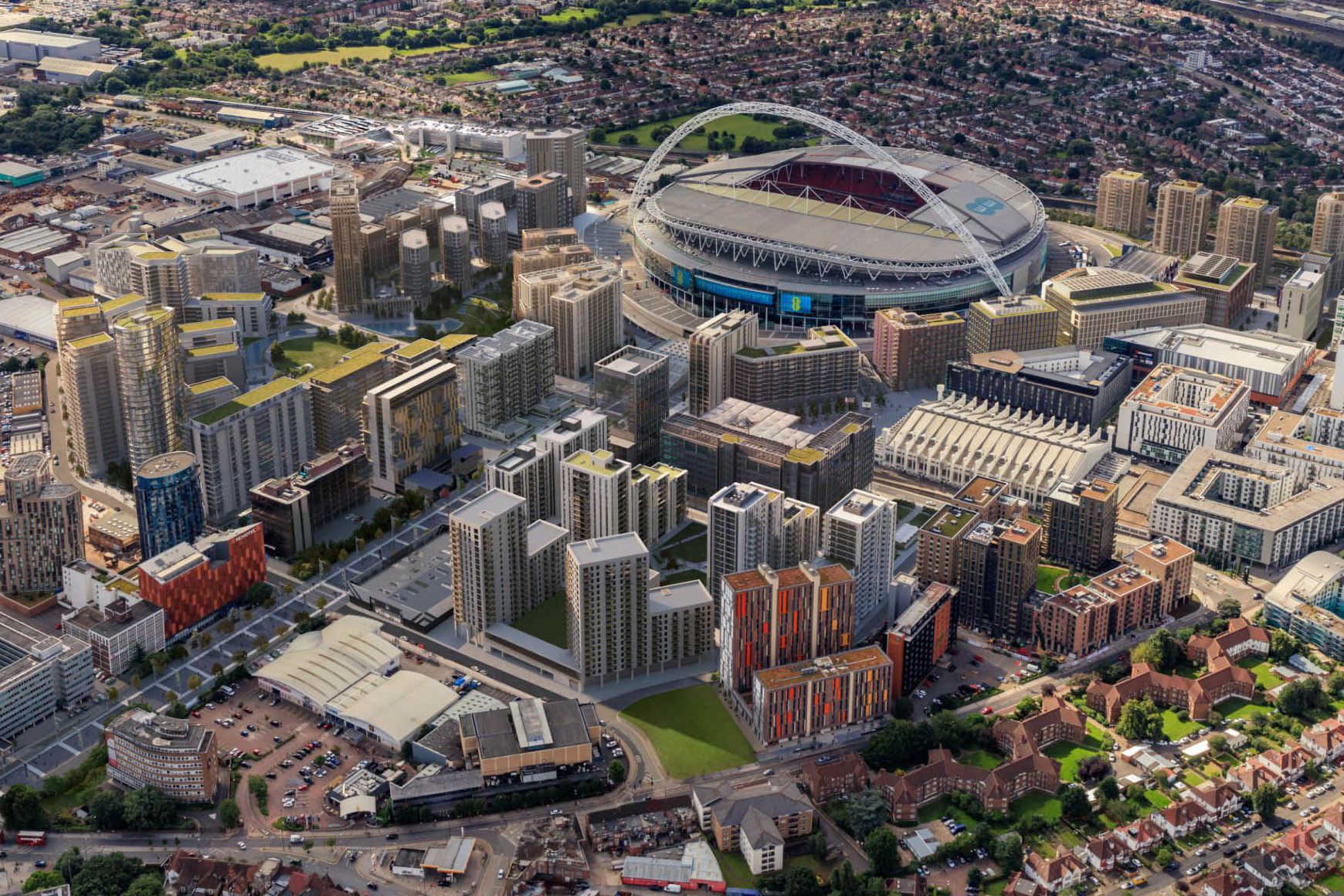
A rendering of the 85-acre masterplan for the Wembley Park neighborhood.

— Jason Margrave
Executive Director - Development
Quintain
Quintain Ltd. engaged Delve to raise project density while minimizing daylighting and cost impacts, solving for complex project requirements in a 12-acre mixed-use development on the North East Lands site in Wembley Park, London.
Using Delve, Quintain generated, evaluated, and optimized 40,000 variants that increased the number of housing units (i.e. "unit yield") while preserving quality of environment over an existing benchmark design. By the end of the 8-week engagement, Delve produced 24 high-performing variants that exceeded all goals across unit yield, usable built area, daylight access, sun hours on the ground, and daylight impacts on neighbors.
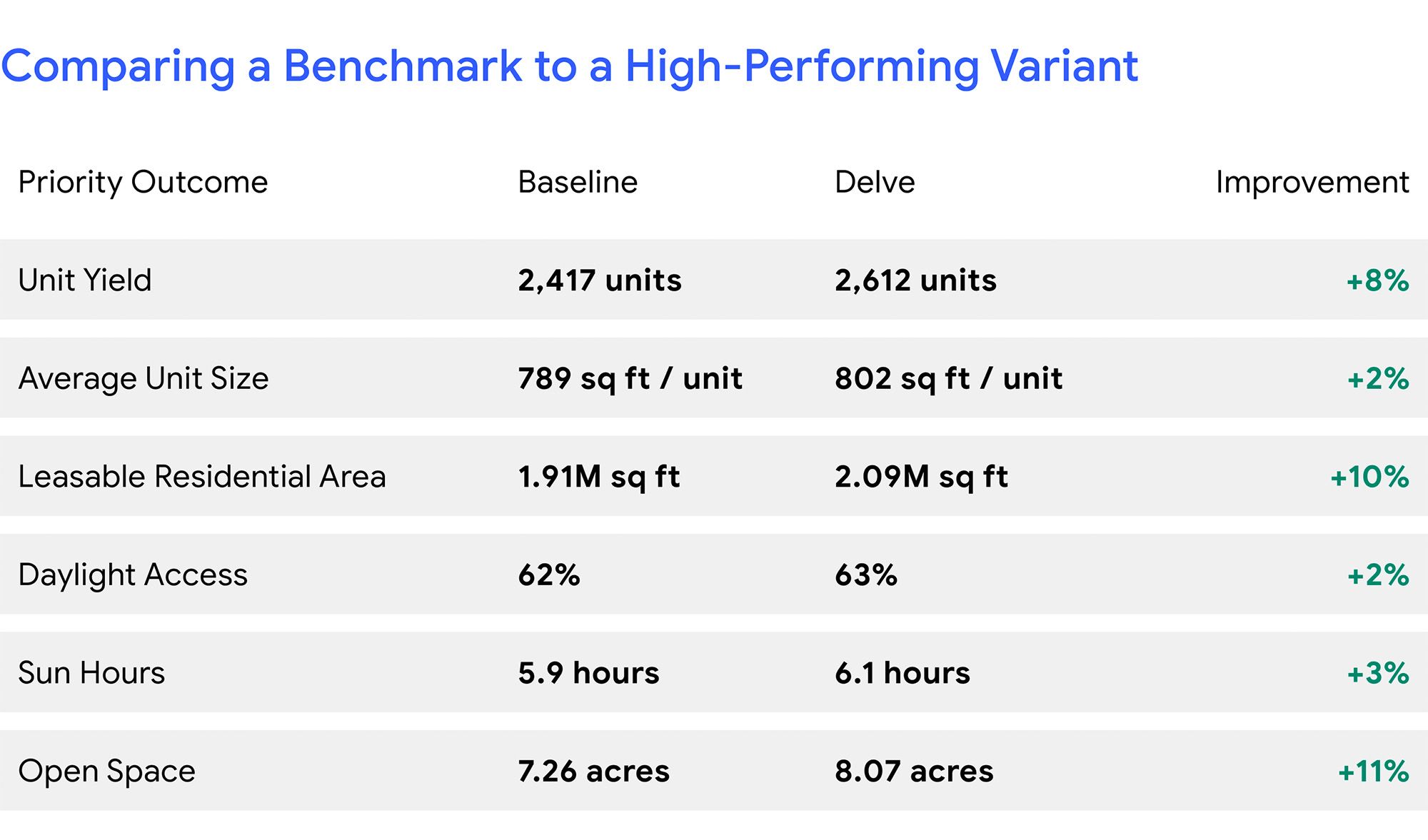
This work confirmed that Delve could produce multiple design options that increased density, met regulatory constraints, and improved the resident experience on and around a challenging site. Additionally, the Sidewalk Labs team customized Delve to reflect both project-specific needs and Quintain s design principles.

Delve produced 24 high-performing variants that exceeded all goals across unit yield, usable built area, daylight access, sun hours on the ground, and daylight impacts on neighbors.
Quintain is an award-winning real estate developer in the U.K. and Ireland with a focus on creating neighborhoods where people love to live. In 2004, Quintain received permission to develop 85 acres of land around Wembley Stadium. Although a historic cultural venue — the stadium has hosted both the Olympics and the World Cup — the site surrounding it was underutilized. Quintain’s masterplan proposed a new Wembley Park: thousands of new homes and jobs, and major improvements to the 42 acres of public realm. Wembley Park is to be the largest multi-family, Build to Rent site in the U.K., with over 6,000 homes managed by Quintain Living.
Within Wembley Park, the 12-acre North East Lands parcel was last to be developed. Quintain had ambitious goals for the parcel and needed a design that could satisfy multiple spatial and performance requirements. Previous designs from 2016 and 2019 either did not provide sufficient unit yield to achieve the project’s financial objectives or reduced daylight access. While taller buildings would add more units, they led to overshadowing and increased costs for higher floors.
Facing a complex problem space, Quintain turned to Sidewalk Labs’ Delve software to augment their decision-making process.

3D visuals from Delve showing physical design constraints and Quintain's existing benchmarks.
Delve solves multi-dimensional optimization problems specific to urban design and development. First, by using machine learning and computational design, Delve generates thousands of comprehensive design options. Second, Delve evaluates the multiple impacts these different options could have on key metrics and quality-of-life indicators. Finally, the Delve software identifies design options with the best performance and provides a detailed analysis of each to the user.
Delve translates complex project requirements into an optimization problem. Defining the problem involves identifying the considerations and complications within a project. A typical problem set includes:
In consultation with Quintain, the Sidewalk Labs team defined the problem as:
After defining the problem, the Sidewalk Labs team and Quintain were ready to apply Delve.
After a kickoff meeting and receipt of key files, the Sidewalk Labs team converted Quintain’s site information — existing parks and street geometry, as well as desired program and floor areas — into inputs for Delve. Within two weeks of starting the project, the Delve software produced several hundred design options for the site, viewable in the Delve interactive web interface.
The Sidewalk Labs team and Quintain then further customized the model to better answer key questions about unit yield, performance, and financing. Working closely with Quintain, Sidewalk Labs developed and integrated several new features into Delve, including apartment layouts, daylight access, and a project financial model.
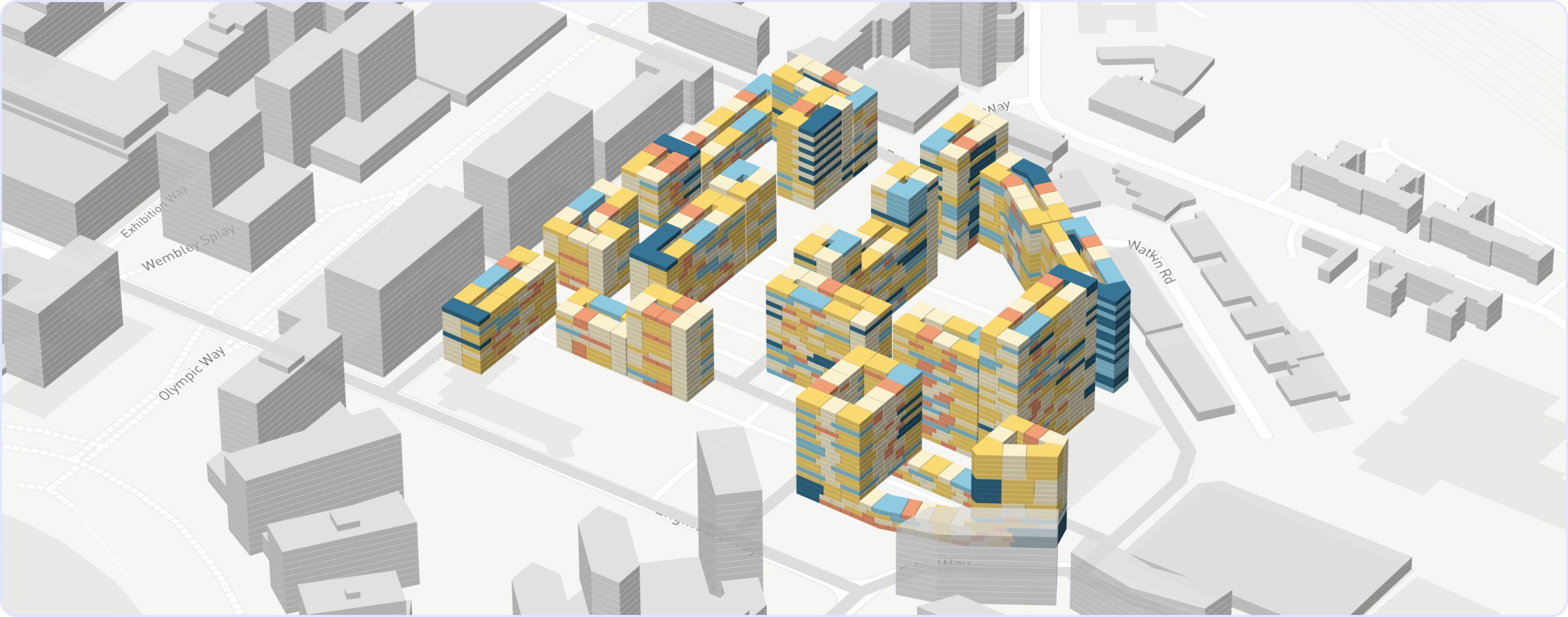
An example of the apartment layout feature in a high-performing design option
Quintain hoped to increase the number of residential units in the North East Lands. While previous schemes envisioned up to 2,400 units, Quintain believed the site could hold a higher density. Ensuring that designs contained sufficient units, however, required time for manual calculation.
In order to accurately estimate the unit yield of new designs, the Sidewalk Labs team added an apartment layout feature to Delve. Using basic inputs about desired unit mix and minimum floor areas, Delve automatically subdivided each floor into individual units. Quintain could then understand if a design provided enough units and how those units would be allocated.
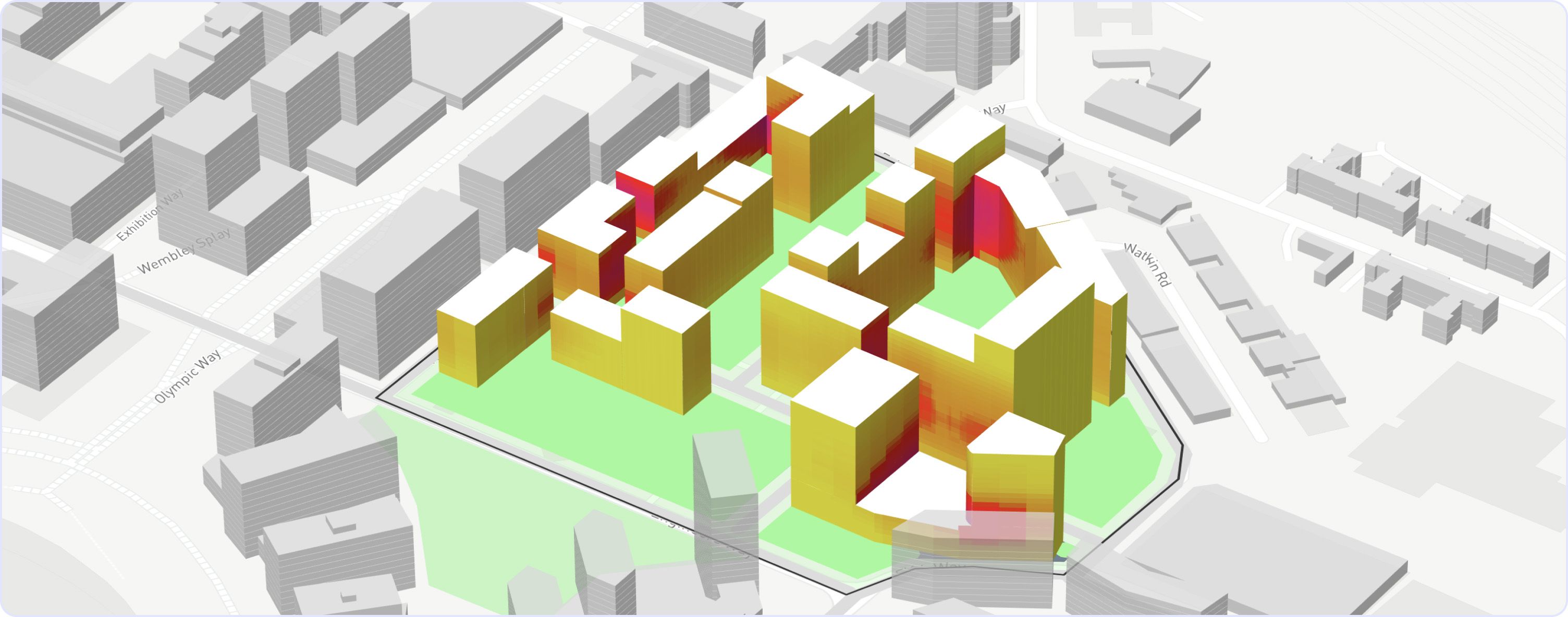
An example of the daylight access feature in a high-performing design option.
Quintain also hoped to ensure good daylight access for its residents — key to quality of experience inside buildings — throughout the site. More density often causes overshadowing due to taller buildings, reducing daylight access for individual units. Quintain wanted to satisfy best practice for daylight access, as defined by the Vertical Sky Component (VSC) metric.
The Sidewalk Labs team customized simulations in Delve to measure VSC. In combination with apartment layouts, Delve evaluated daylight access for each unit. Quintain could see areas of high and low performance, informing architectural strategies and facade treatments.
Adding taller buildings could also increase construction cost. In order to better assess project financials, the Sidewalk Labs team integrated a cost and value model as an interactive spreadsheet. Quintain provided line items and unit rates, which were linked to specific elements of the physical design in Delve. Delve then assessed project feasibility (cost, value, and net profit) based on building heights, floor areas, and the amount of landscaping and open space.
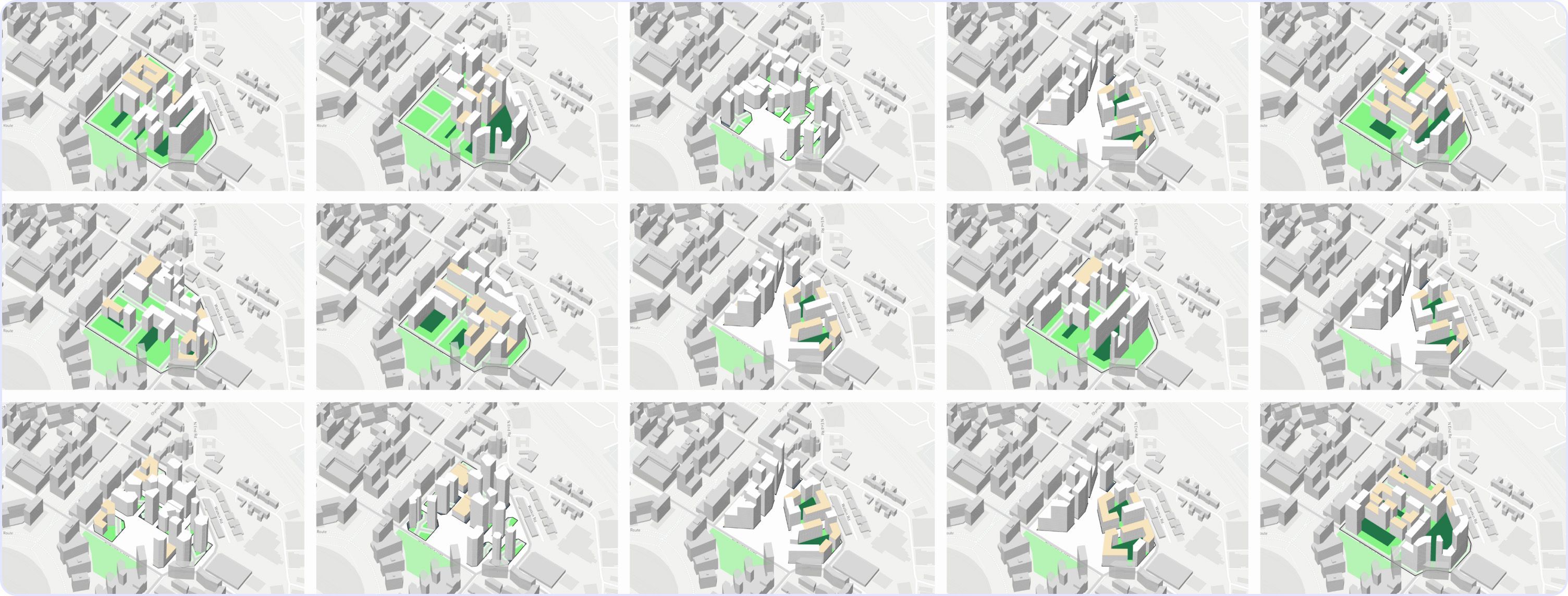
A comparison of the high-performing design options produced in the case study.
By the final week of the engagement, Delve had generated over 40,000 design options for the North East Lands. Results were summarized in a report and shared with the Quintain team as the final deliverable for the engagement. Across all studies, 24 variants outperformed Quintain’s previous design for performance on unit yield, daylight access, sun hours on the ground, and daylight impacts on neighbors.
Delve was able to exceed benchmark performance by identifying key physical design strategies for the site. These included ways to develop irregularly-shaped portions of the site into efficient courtyard blocks, arrange more regular rectangular blocks to increase daylight access, and increase building height in specific locations to limit impact on neighboring development.
Quintain received multiple design options for the North East Lands site that met challenging goals and complex requirements. Delve allowed for the exploration of thousands of options across many dimensions of possible design choices and performance, and showed Quintain that the project could achieve both higher yield while increasing quality of life.
Explore how Delve can supercharge your planning process.